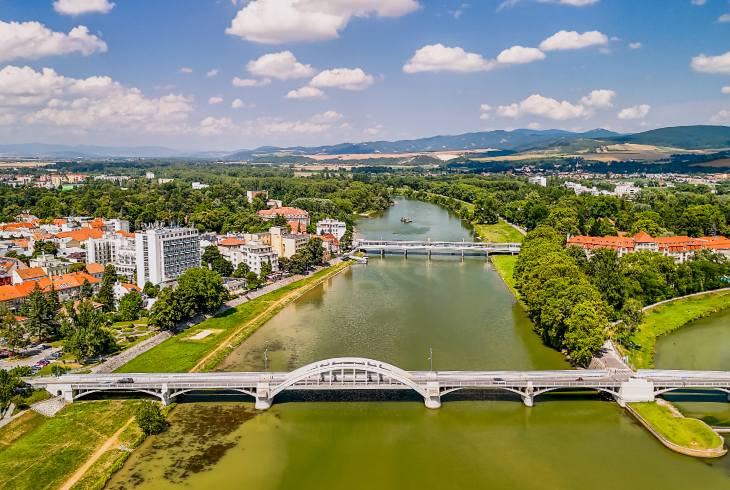

New
Trnava Region aims to maintain clean air even after stricter limits
18. 08. 2025
![]() Air
Air
To maintain good air quality in the Trnava Region, the District Office of Trnava signed a Memorandum of Cooperation with the Ministry of Environment of the Slovak Republic. The purpose of the memorandum is to collaborate on preparing a draft Air Quality Management Plan (AQMP) for the Trnava Region zone. The strategic document aims to improve air quality at local and regional levels and reduce public exposure to harmful pollutants. The currently valid program was issued in 2013, so its update is a key task for the upcoming period.

Air quality assessment in Slovakia is carried out by the Slovak Hydrometeorological Institute (SHMI) using measurement, calculation, forecasting, or estimation methods. Pollutant concentrations are determined either by measurement in the breathing zone or by mathematical modeling. In the Trnava Region, air quality is continuously measured at four locations:
- Trnava, Kollárova Street (urban, traffic station)
- Senica, Hviezdoslavova Street (urban, traffic station – transit of heavy goods vehicles)
- Sereď (urban, background station)
- Topoľníky (rural, background station part of the EMEP network, recording long-range pollution transport)
In the Trnava Region, no exceedances of limit or target values for any pollutant were recorded in the last three assessed years. Therefore, no Air Quality Management Area (AQMA) requiring improvement measures was designated based on monitoring.
However, from 2030, stricter limits will be introduced by transposing Directive (EU) 2024/2881 of the European Parliament and Council of 23 October 2024 on ambient air quality and cleaner air in Europe. Under the new daily limit for PM2.5 particles (25 μg/m³, not to be exceeded more than 18 times per calendar year), exceedances would occur at all four monitoring stations.
SHMI also evaluates air quality in locations without monitoring stations, using mathematical modeling. For 2025, this method identified 17 risk municipalities in the districts of Piešťany, Dunajská Streda, Senica, Hlohovec, Galanta, and Trnava. Municipalities were assigned a risk level (RL) of 1 or 2; none reached the highest, third level. In all municipalities, the main sources of air pollution were identified as local heating, i.e., households.
RL1
Blahová, Drahovce, Jelka, Okoč, Veľký Meder
RL2
Borský Mikuláš, Dechtice, Jalšové, Koplotovce, Podbranč, Prašník, Ratnovce, Sasinkovo, Sokolovce, Šaštín-Stráže, Šoporňa, Zlaté Klasy
Although the Trnava Region is among the least problematic areas in Slovakia regarding air quality, the involved parties agreed to prepare a new regional strategic document.
The drafting of the Air Quality Improvement Program for the Trnava Region will be carried out in cooperation with the Air Quality Managers for the Trnava Region from the Ministry of Environment and the Office of the Trnava Self-Governing Region.
The memorandum was signed for the period until 31 December 2027 – the end of the LIFE IP – Air Quality Improvement (Populair) project. On behalf of the Minister of Environment, it was signed by project coordinator Júlia Čaplová and the head of the District Office of Trnava, Jaroslav Barcaj.











